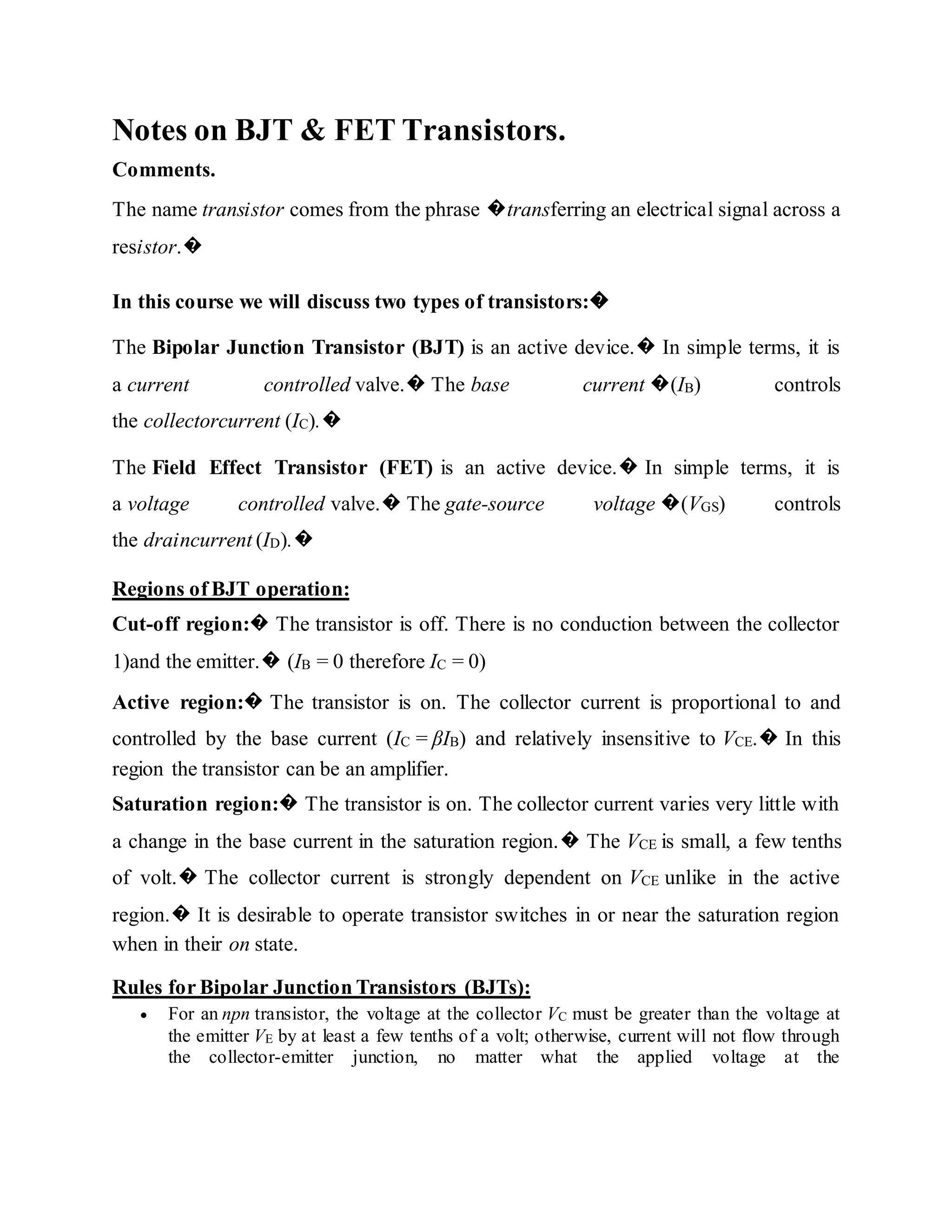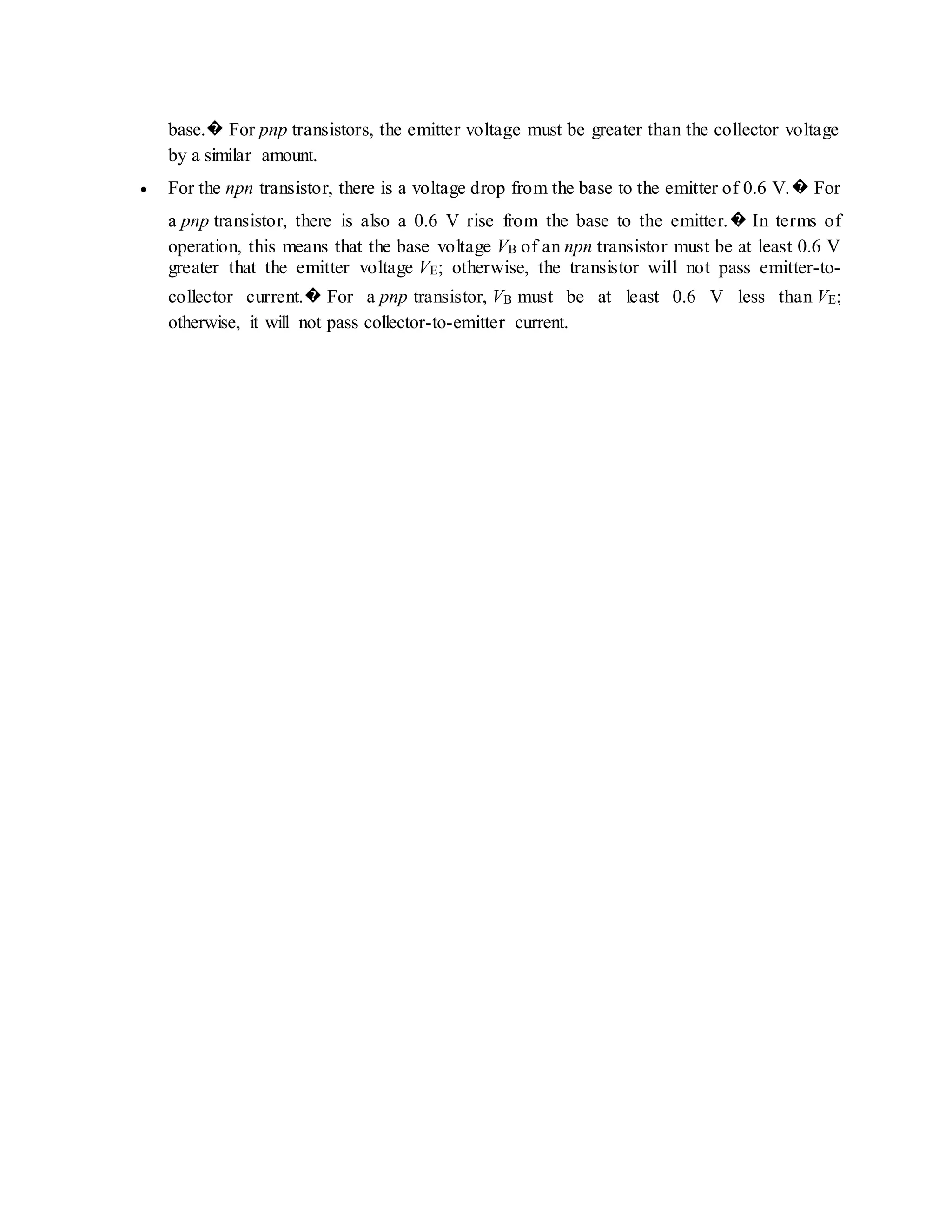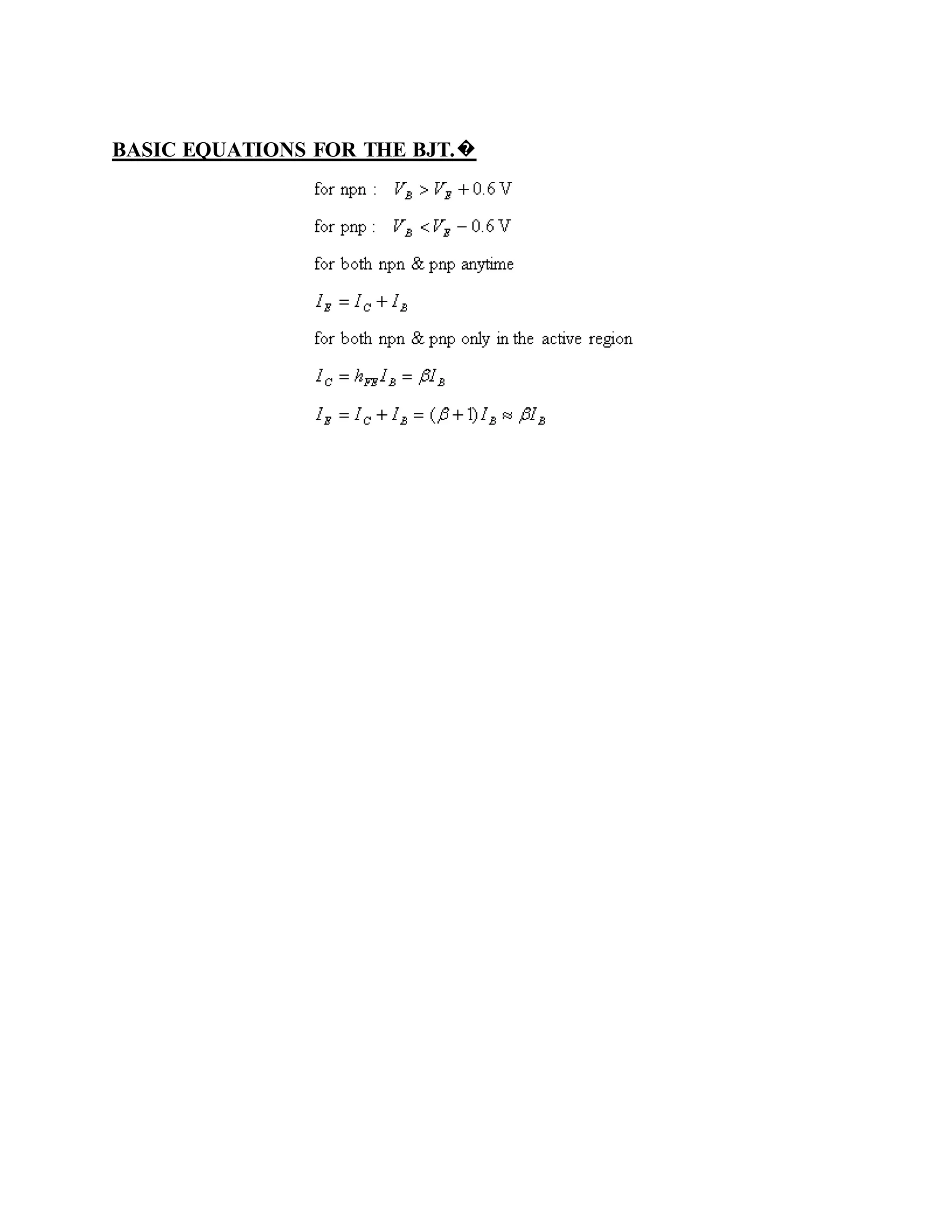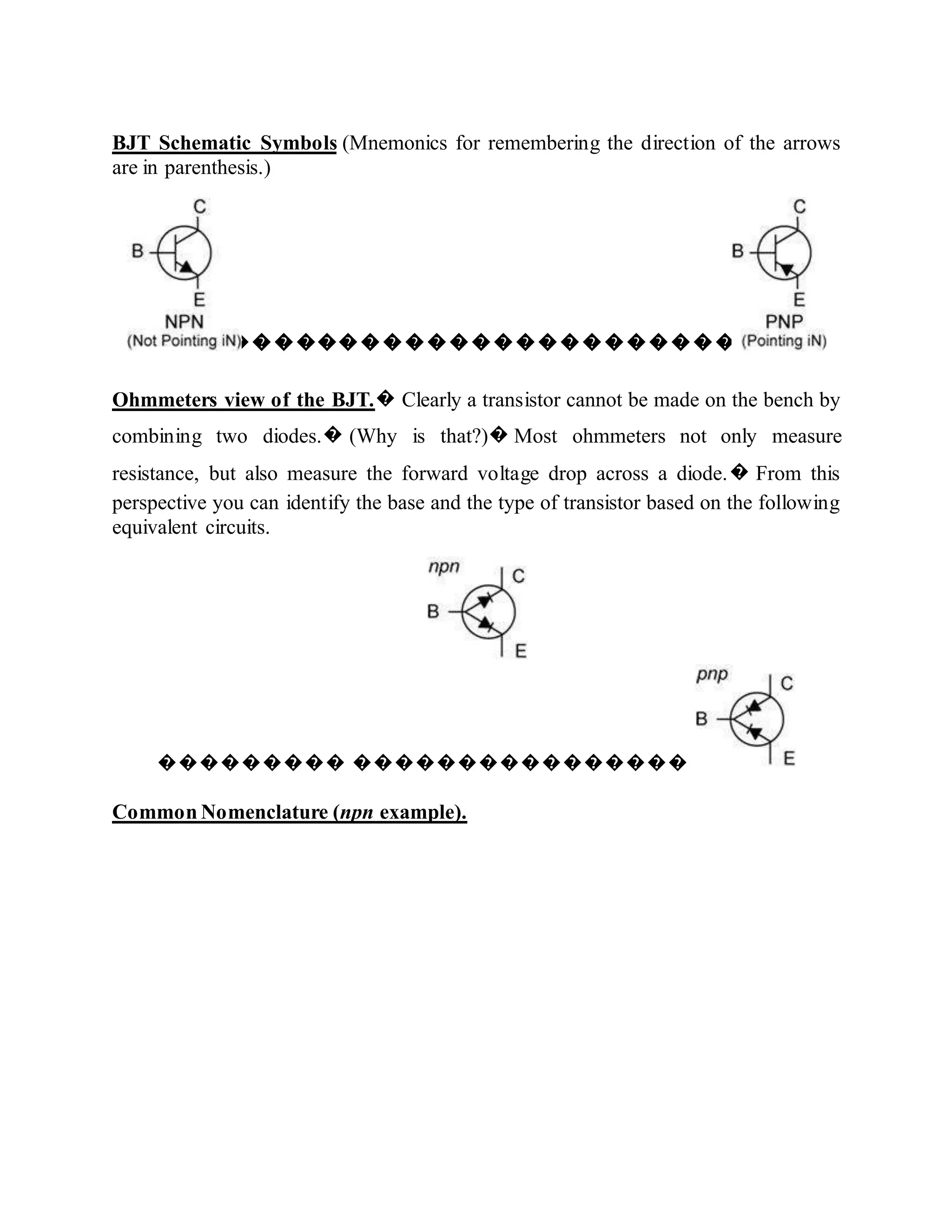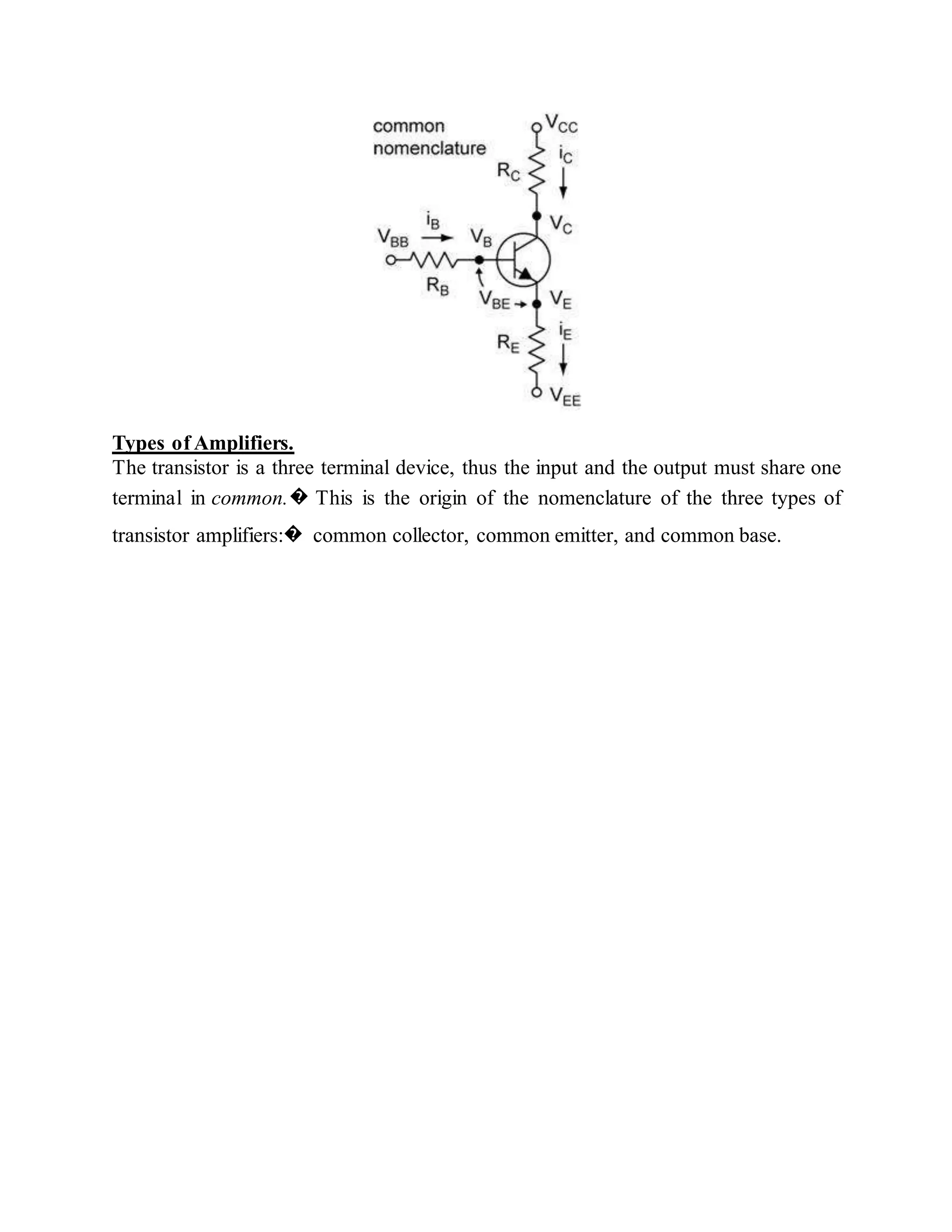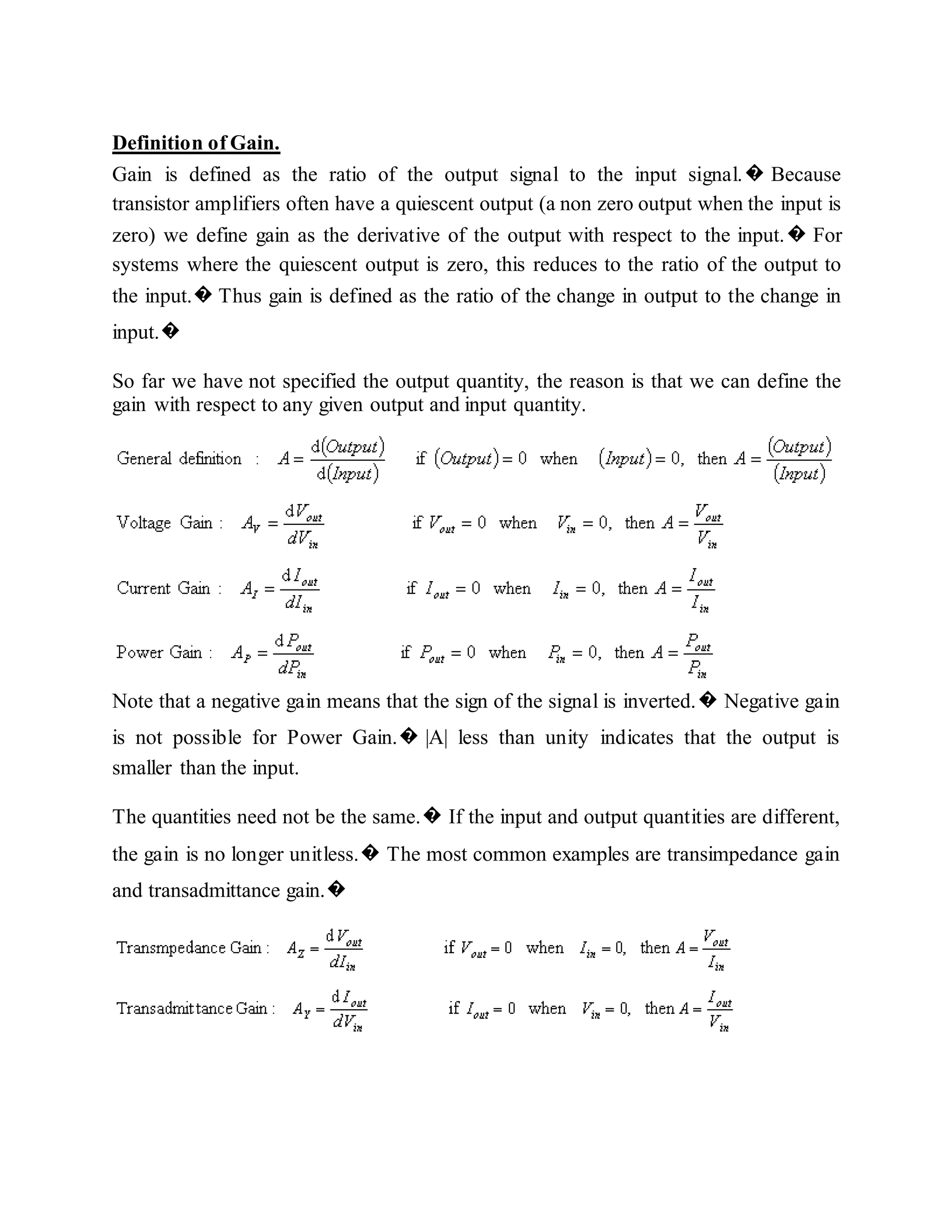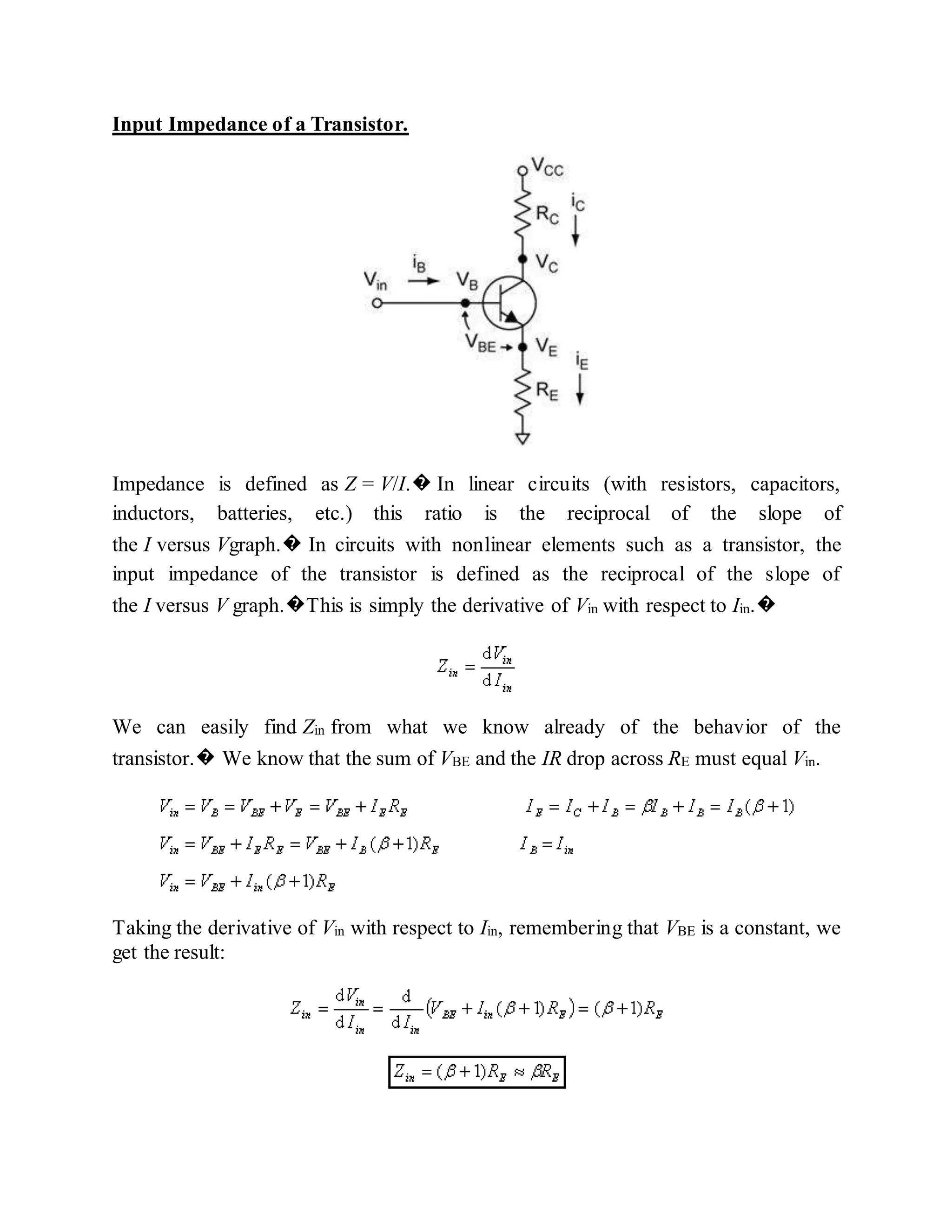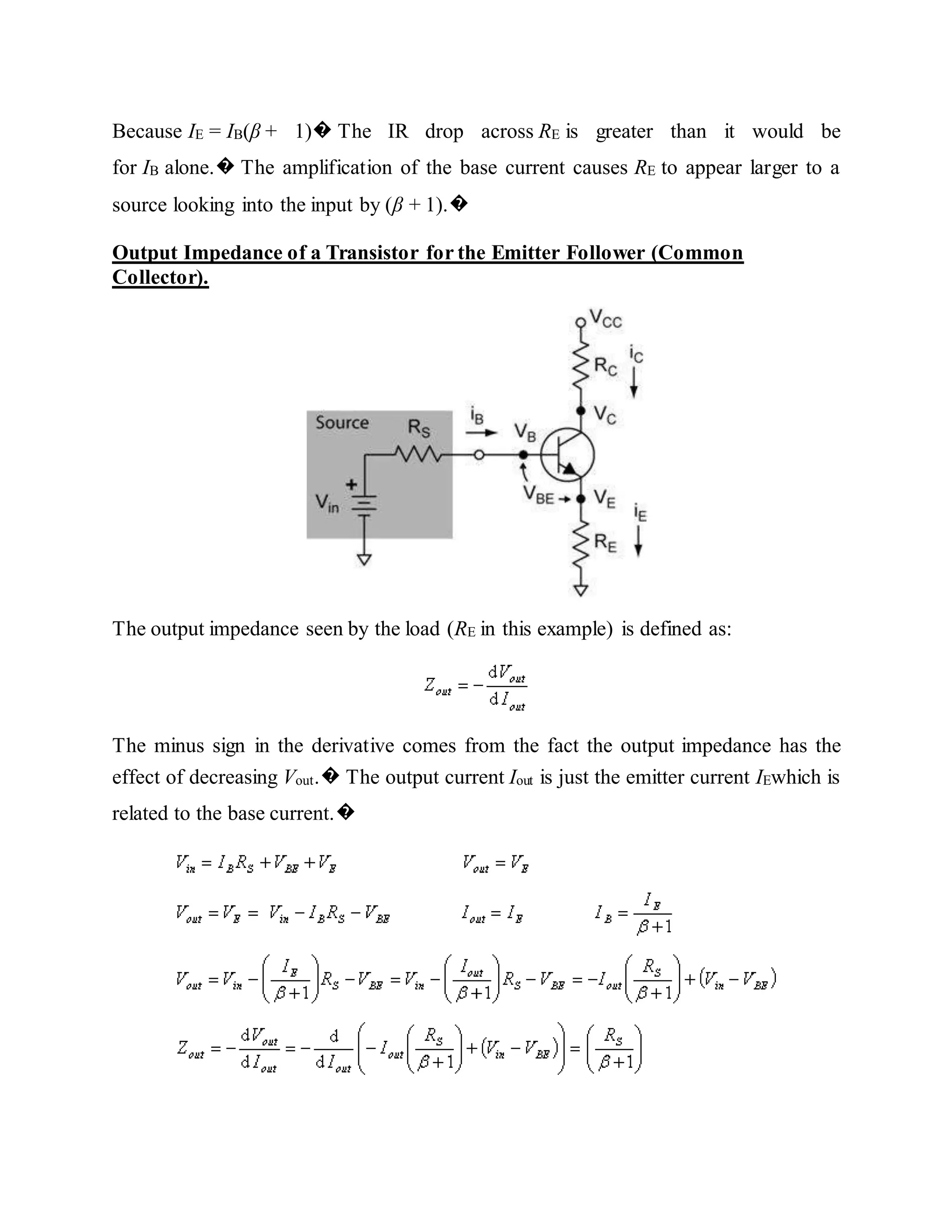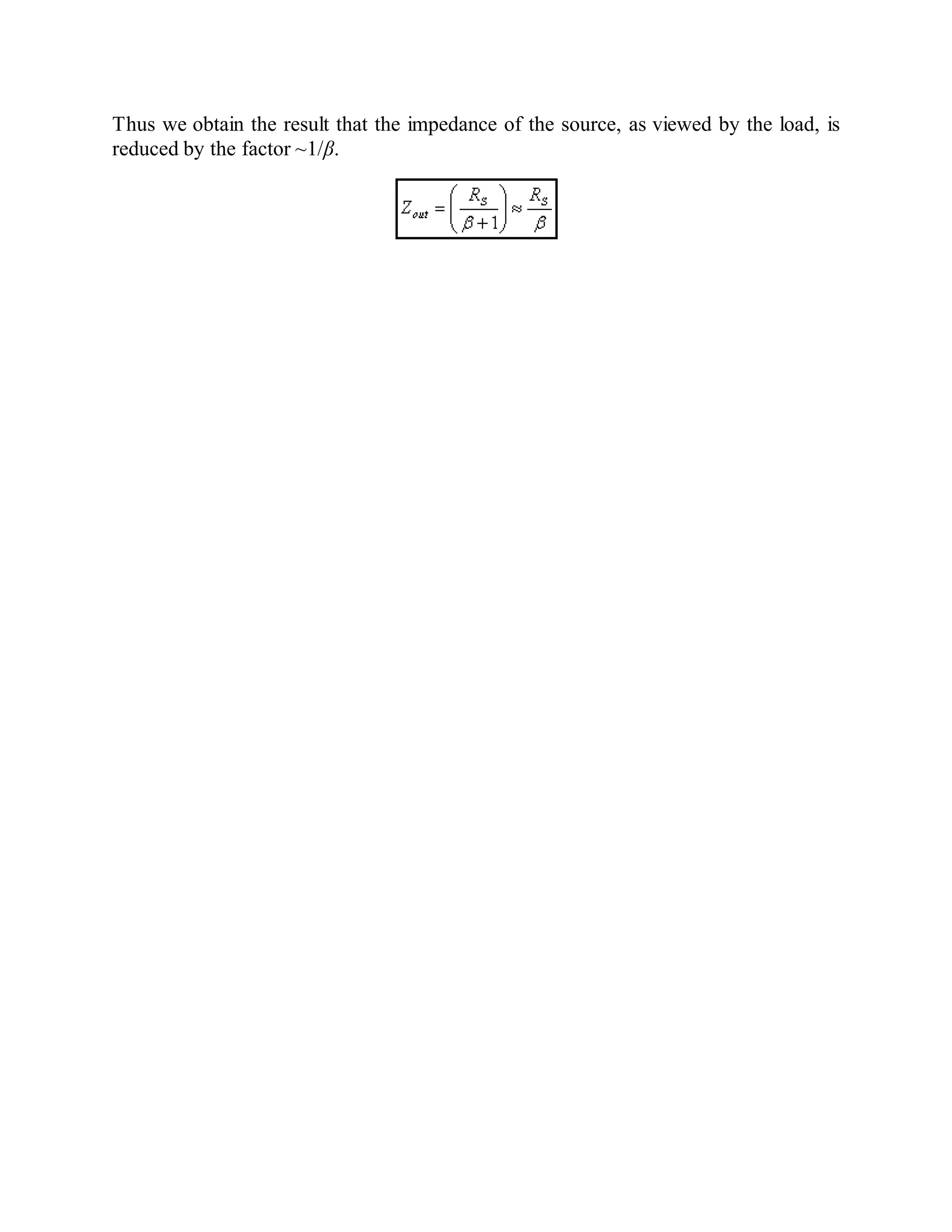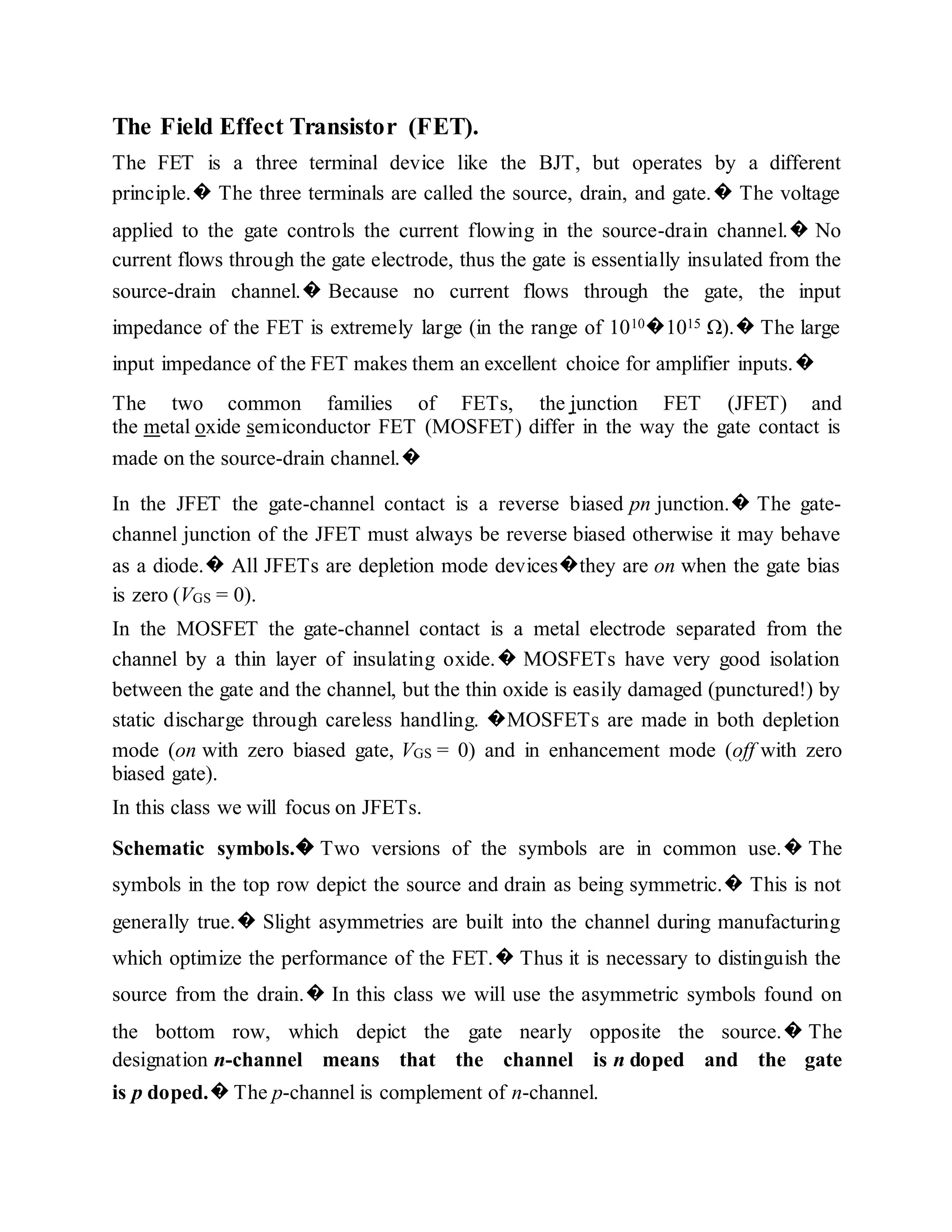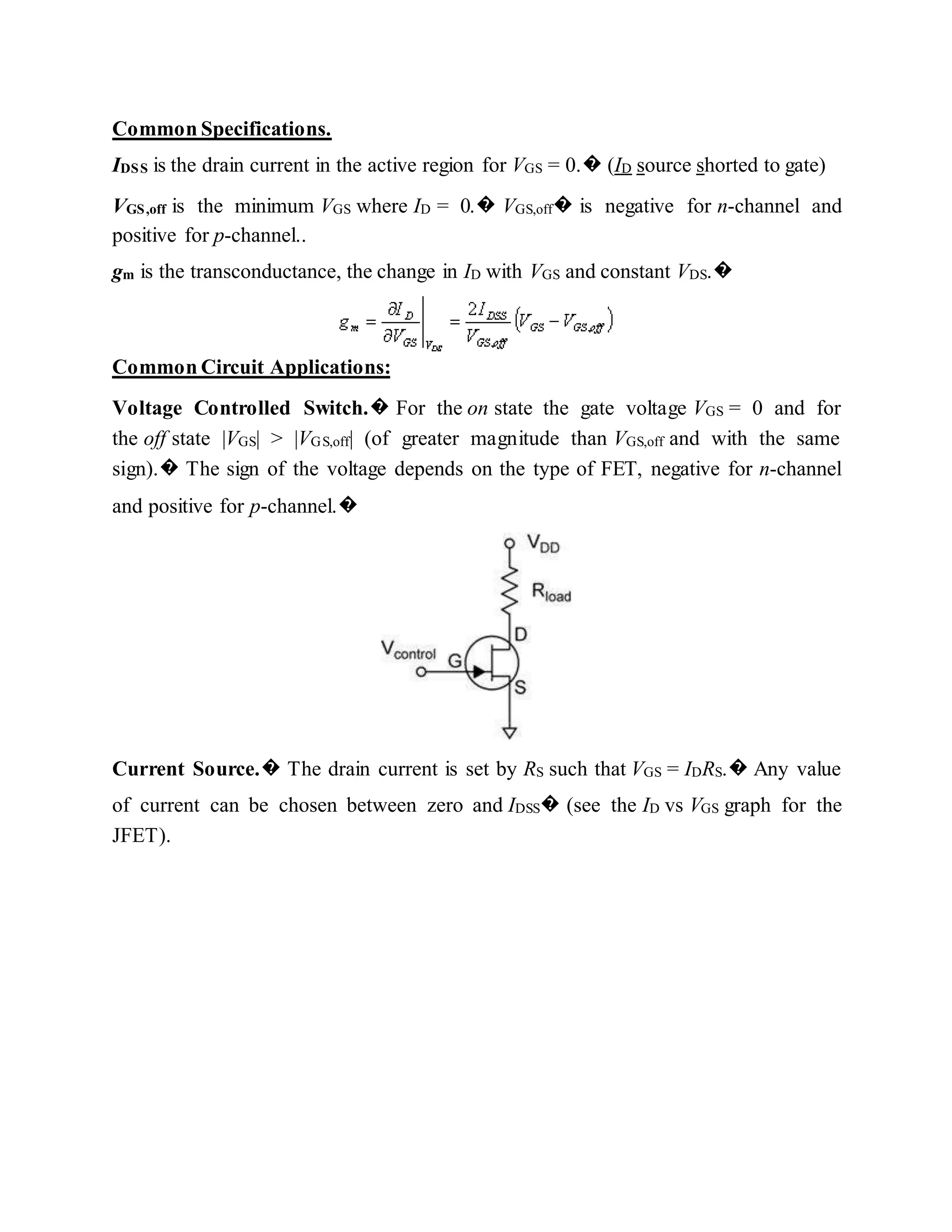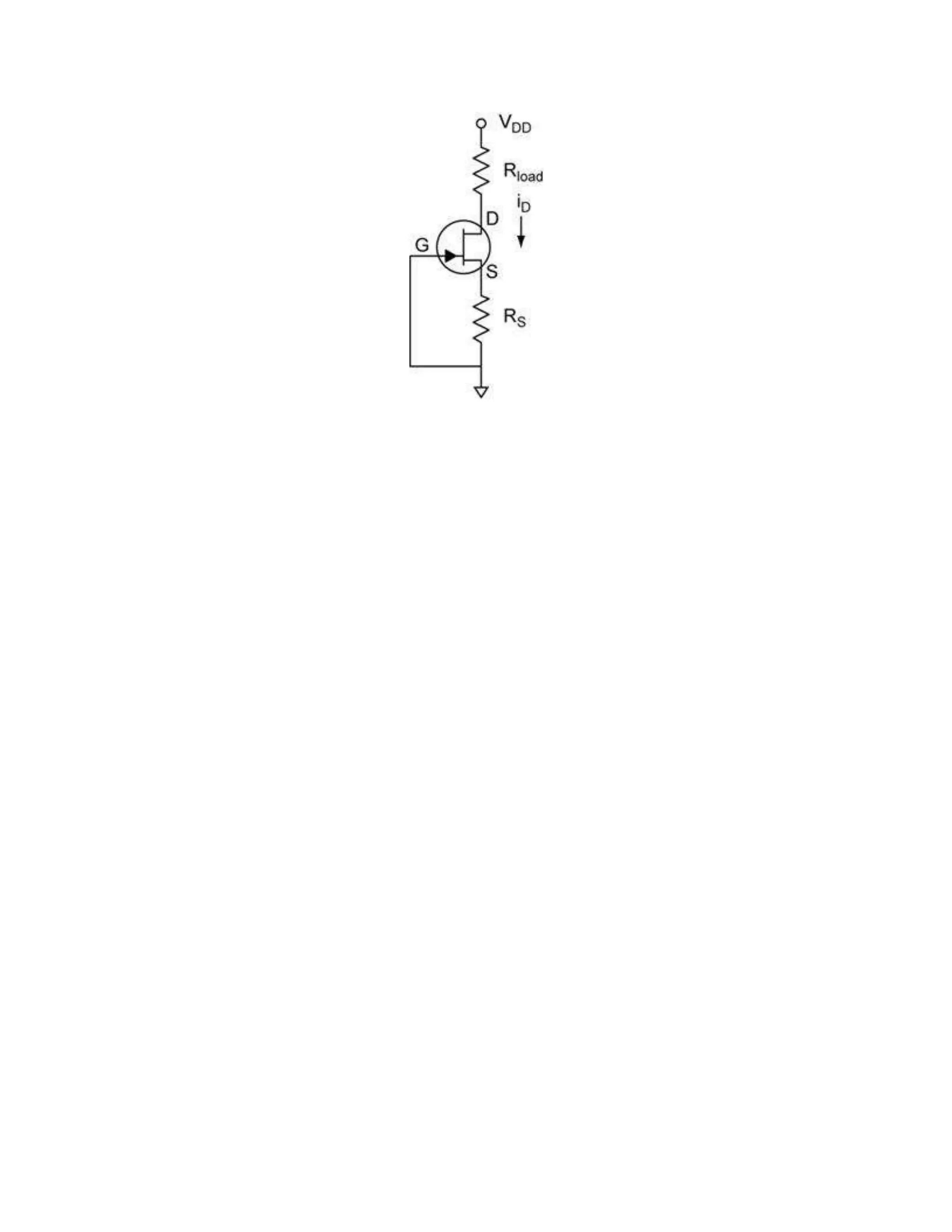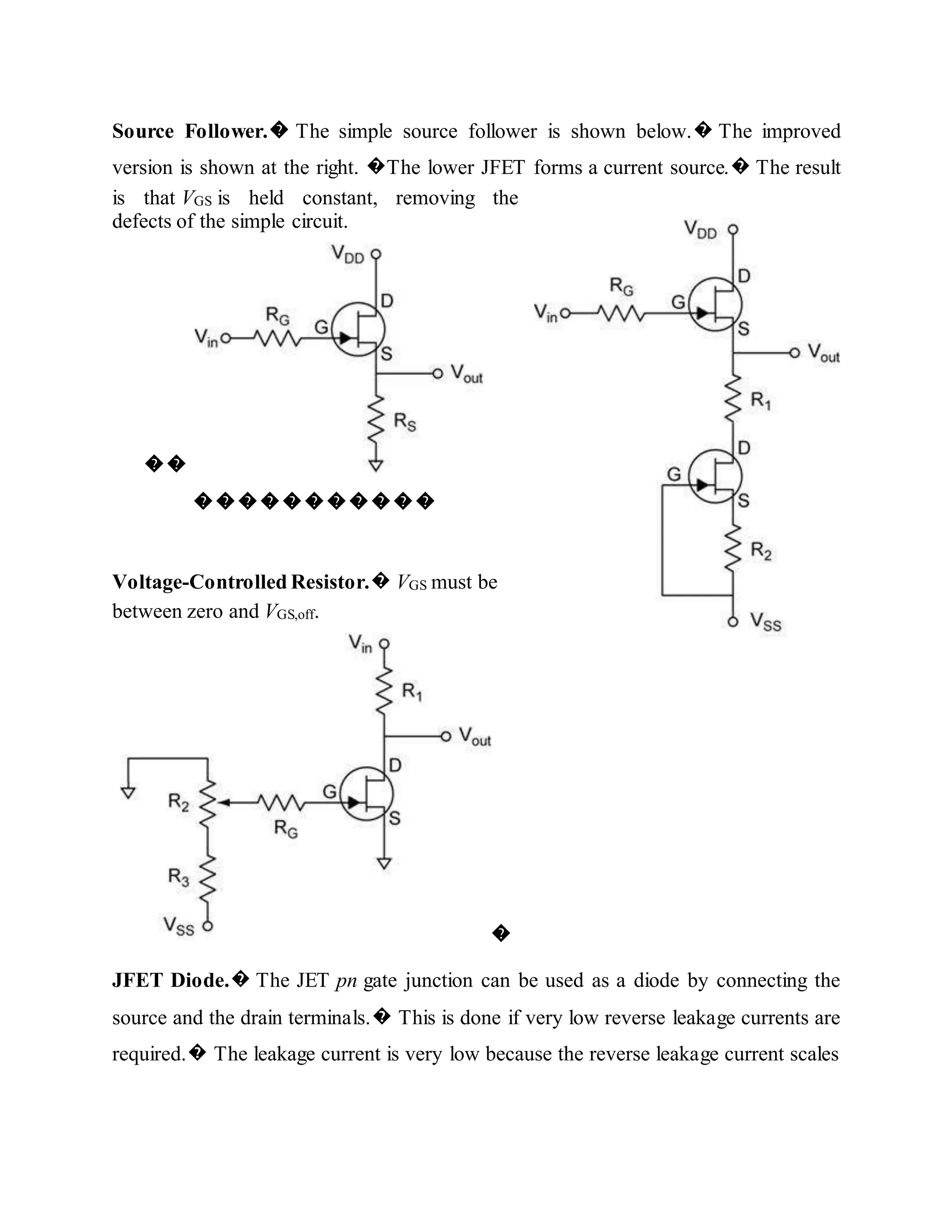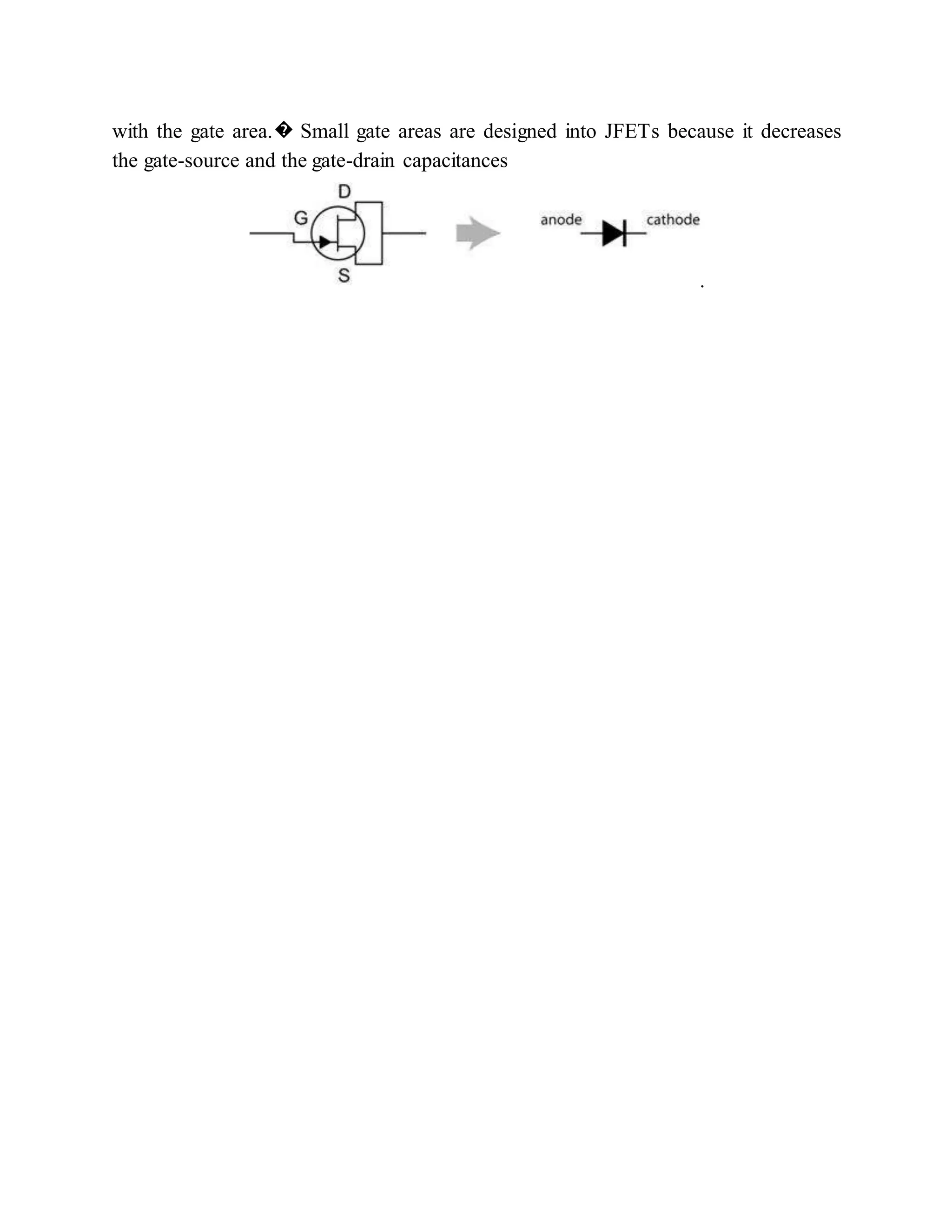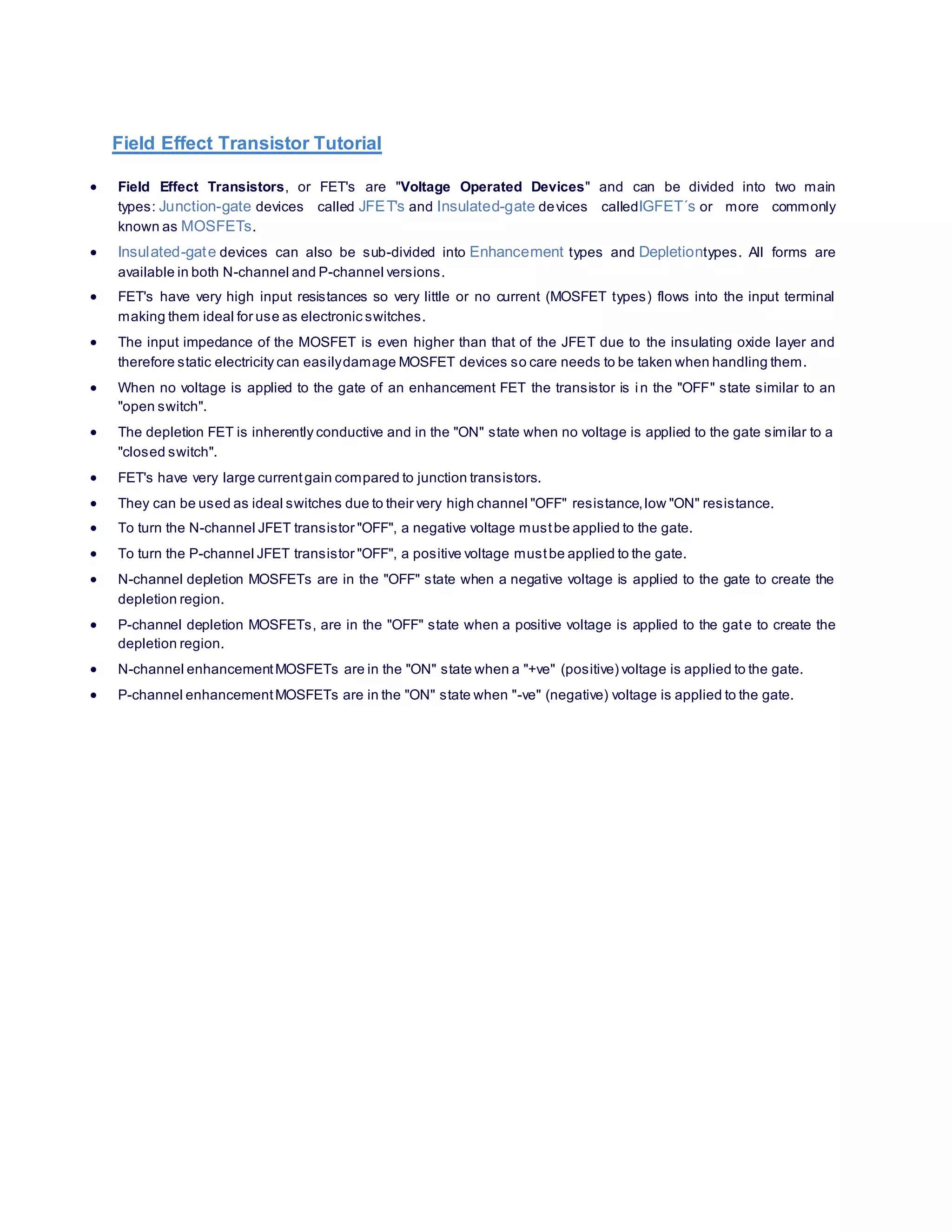The document provides information on BJT and FET transistors. It discusses that BJTs are current controlled devices where the base current controls the collector current, while FETs are voltage controlled devices where the gate-source voltage controls the drain current. It also summarizes the different regions of operation for BJTs and JFETs, including cut-off, active, and saturation regions. Common applications of BJTs and JFETs are also covered such as voltage controlled switches and current sources.
